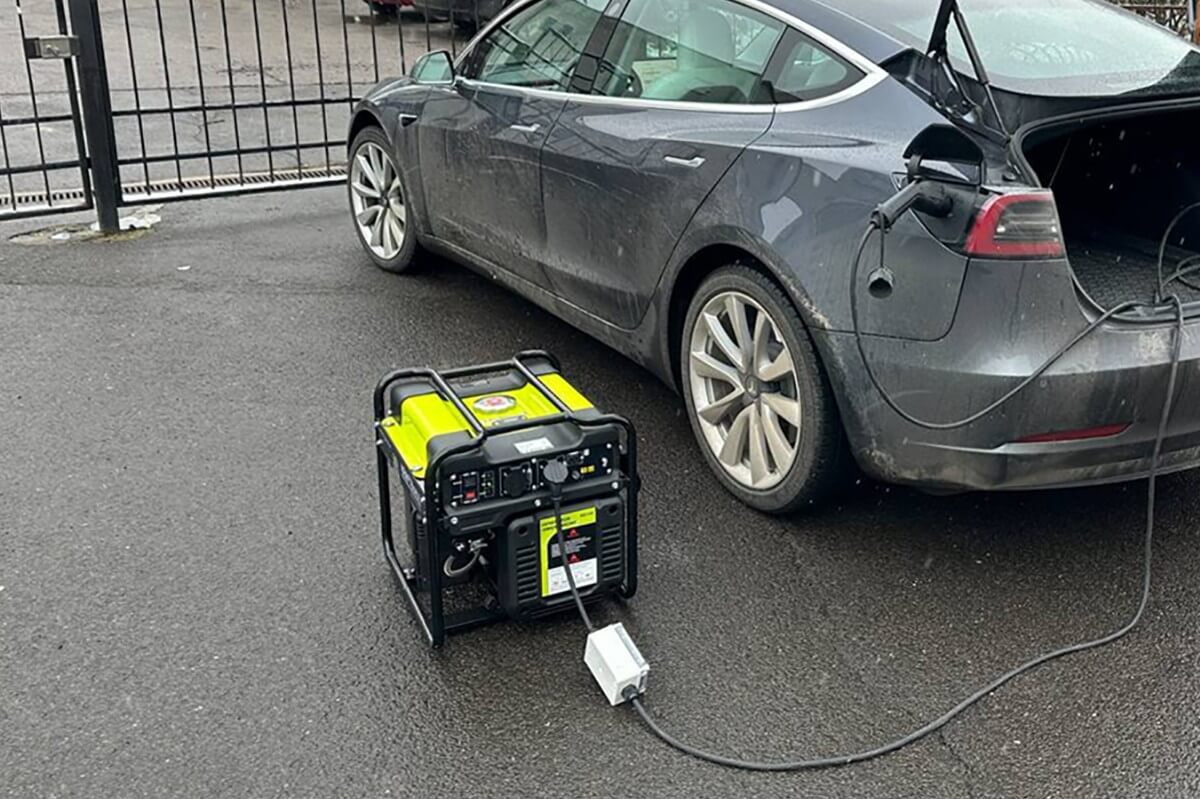
Electric versus internal combustion engine variability: is it worth charging with a generator
The lack of electricity in Ukraine is not a reason to give up on electric vehicles. Currently, there are plenty of means to charge the battery. As one Tesla Model 3 user put it: "Nowadays, an electric car has a lot of means to charge and can use fossil fuels if there is no electricity, but an ICE car has no chance of moving if there is no fuel. So [...]
Content:
The lack of electricity in Ukraine is not a reason to give up on electric vehicles. Currently, there are plenty of battery charging facilities available.
As one of the users of the Tesla Model 3 electric car said:
"Nowadays, an electric car has many means to charge and can use fossil fuels if there is no electricity, but an ICE car has no chance of moving if there is no fuel."
So let's calculate, based on the numbers, how much it will cost to charge with a generator if there is no electricity. Maybe we'll even dispel the myth that ICE cars have become more profitable to use than electric cars that charge from a generator, but maybe not.
Calculation example
A typical petrol or diesel generator has a 20-35 litre tank, depending on the model. The fuel consumption will depend on the power that the generator is capable of delivering, and the power output will depend on the devices that will be connected and their number.

As practice shows, generators with a capacity of less than 4.5 kW will not charge an electric vehicle at all, the protective mode will be activated, and the generator will simply turn off. And it should be understood that the power that will be supplied to the electric vehicle will be 30-50% less than the maximum indicated on the generator.
For the calculation, let's take a 7 kW petrol generator with a 20 litre tank and fuel consumption of 2.45 litres per hour, which is the most popular in private homes.
On the other hand, there is the Tesla Model 3 electric car with a 75 kWh battery and energy consumption of 18.5 kWh per 100 km.
Taking into account the error, the generator will supply about 3.5 kW per hour to the electric car. So we'll start from there.
75 (battery capacity, kWh) : 3.5 (generator power kWh) = 22 (hours)
22 (hours) x 2.45 (fuel consumption per hour) = 53.9 (litres per full charge)
A full charge will take 22 hours and 53.9 litres of fuel, which is more than one tank, so you need to have a supply of fuel in a canister. The average cost of petrol at a petrol station is UAH 52.
53.9 (litres) x 52 (UAH per litre) = 2,802.8 UAH
A full charge of an electric vehicle will cost 2 802,8 UAH, or UAH 37.37 per kilowatt.
2 802.8 (UAH for a full charge) : 75 (battery capacity) = 37.37 (UAH per kilowatt)
On a full charge, Tesla will travel 449 km. So, according to the calculations, every 100 km will cost the owner UAH 624.23.
624.23 (UAH per 100 km) : 52 (UAH per litre) = 12 (litres per 100 km)
We can say that the Tesla Model 3 spends 12 litres of petrol per 100 km, or UAH 6.24 per kilometre.
Comparative table
We have done some analysis of potential fuel consumption and can provide a calculation based on three EVs and their approximate ICE counterparts:

Our calculations are based on average fuel and energy consumption figures usually provided by manufacturers and estimates based on user-submitted data. We bear in mind that all figures are only approximate and that we need to allow for weather conditions, driving style, the generator itself, its capacity and fuel types.
Conclusion.
There are still enough extraneous factors that will interfere with obtaining accurate figures in reality. For example, if the energy consumption while driving an electric vehicle is more than 200-300 watts per kilometre, then replenishing it will be more expensive than expected. Also, the fuel consumption of the generator will depend on the load, and if it changes, the final figures will change.

You can argue and calculate for a long time, but the only thing that remains unchanged is that for a conventional fossil fuel car, there is only one option for movement - fuel, while electric vehicles have many options for recharging.
And this is not only the simplest in the form of an internal combustion engine generator, but alternative sources of energy can be used: solar panels or a wind turbine. We should not forget about the old technologies for converting coal, firewood, household or agricultural waste into generator gas. It can be used to power the same internal combustion engine generators or converted through steam turbines. In other words, there are a lot of options for generating electricity locally, you just need to look around.





